I'm going to answer this myself because I think it's worth recording for future reference. I have a SettingsDialogViewController I wire up in the ViewDidLoad() method of my HomeDialogViewController:
NavigationItem.LeftBarButtonItem = new UIBarButtonItem("Settings", UIBarButtonItemStyle.Plain, (e, sender) => {
ActivateController (_settingsDvc());
});
The SettingsDialogViewController is created with HidesBottomBarWhenPushed = true. So when the settings dialog is activated, the bottom bar is hidden which causes the ViewWillLayoutSubviews() method of the CustomTabBarController to be called. By overriding that method I can set the visibility of my indicator based on whether the visible view controller (e.g. SettingsDialogViewController) hides the bottom bar when pushed. When that view controller is popped the indicator will automatically reappear.
public override void ViewWillLayoutSubviews () {
base.ViewWillLayoutSubviews ();
var selectedVc = SelectedViewController as UINavigationController;
indicator.Hidden = selectedVc != null && selectedVc.VisibleViewController.HidesBottomBarWhenPushed;
}
A final note, I found that the animation that occurred when activating the new settings view would display a black band across the screen below the status bar. I resolved this by setting the AutoResizingMask in the "from" view controller.
public override void ViewDidLoad () {
base.ViewDidLoad ();
NavigationItem.LeftBarButtonItem = new UIBarButtonItem("Settings", UIBarButtonItemStyle.Plain, (e, sender) => {
ActivateController (_settingsDvc());
});
View.AutoresizingMask = UIViewAutoresizing.FlexibleHeight;
}
